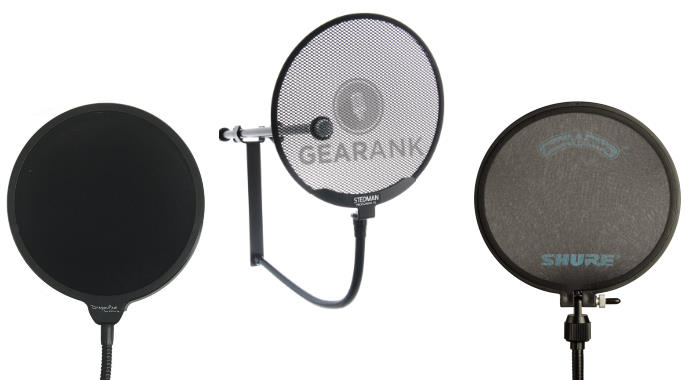
Disclosure
We recommend all products independently of 3rd parties including advertisers. We earn advertising fees from:
• • • • •

• • • • •
Amazon
As an Amazon Associate we earn from qualifying purchases.
• • • • •
Microphone Guides
Regardless of how good your mics are, if you don’t keep plosives in check, your recording sessions could be ruined. This is why getting the best pop filter is important, so you don’t have to fix plosives in post production.
A good pop filter not only helps manage plosives, it also keeps Harsh Sibilance in check. Hygiene is also a very important thing especially in recording studios. A pop filter prevents stray droplets of saliva from hitting your mic. Pop filters can be cleaned regularly.
Stop consonants (also called “plosives”) force air to move faster, which hits the mic’s diaphragm hard enough to cause unwanted signal clipping. Pop filters dissipate the air reducing its velocity, allowing for clean vocal recording even when using words that start with consonants like “P” and “B”.
Thanks to the efficiency and practicality of their mechanical filtration, we still haven’t found better alternatives to pop filters. Pop filters are positioned between the singer and the microphone to prevent fast-moving air from hitting the mic capsule.
The Best Pop Filters 2024
| Gearank* | SRC* | Check Price | ||||||
|---|---|---|---|---|---|---|---|---|
| Universal Pop Filters | ||||||||
 | Dragonpad USA 6" | 90 | 10700+ | |||||
 | Shure PS-6 Popper Stopper | 91 | 325+ | |||||
 | Stedman Proscreen PS101 | 94 | 300+ | |||||
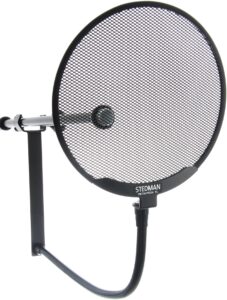 | Stedman Proscreen XL | 94 | 300+ | |||||
| Special Option for Large-diaphragm Rode Condensers | ||||||||
 | Rode SM6 | 92 | 800+ | |||||
Author & Contributors
Raphael Pulgar
I've been an audio engineer for 20 years specializing in rock and metal recordings. I also play guitar and produce original music for my band and other content creators.
Universal Pop Filters
Dragonpad USA 6"
Cons
- The rotation of the filter unscrews the headframe
Pros
- Simple and effective
- Dual layer pop filter design offers improved plosive rejection
- 360 degree swivel allows for odd angled mic positions
The Dragonpad USA 6" Pop filter is a simple, no nonsense pop filter with a 13", 360 degree gooseneck for positioning adaptability. This allows mic techniques such as singing at an off angle to reduce sibilance.
The clamping mechanism is designed to accommodate various types of mic stand shafts without scuffing or scratching them.
A dual layered filter prevents harder pops and plosives from overloading sensitive condenser diaphragms.
The unit's simplicity and no-nonsense is the primary reason to get this filter. The 6" Size is able to shield even the largest of microphones with a good amount of plosive rejection and minimal tonal difference.
One thing to note is that the 360 degree rotation of the pop filter unscrews the headframe of the unit.
That quirk aside, the Dragonpad USA 6" just works for those who want an affordable, no nonsense pop filter. It is perfect for use with budget friendly mics.
Features
- Diameter: 6"
- Gooseneck: 13"
- Two-layer pop screen
Shure PS-6 Popper Stopper
Cons
- Attenuates high frequencies
- Obscures visibility of mic position
Pros
- Highly effective for attenuating intense vocal deliveries
- Easy to mount
- Great build quality
The PS-6 Popper stopper offers 20db to 30db of plosive reduction. The pop screens uses material that filters out around 3db at the 8kHz to 9kHz range to reduce harsh sibilance.
This makes it great for louder singers or more high-frequency sensitive microphones.
It's not the most transparent because of the trade off for better attenuation of intense vocal deliveries but that more than makes up for the convenience of not having to put as much aggressive plosive removal in post. The filter itself is more opaque than most and may obscure the position of the mic relative to the singer.
The high frequency roll off can work by mellowing out bright microphones like the Telefunken ELA M251 or Sony C800g. Darker mics or singers that have deeper tonalities might not pair well with it.
For ease of set up and ability to stand up to the most aggressive of vocal styles, the PS-6 Popper Stopper scores high marks for reliability. Bear in mind that the filter may color the sound to the detriment of singers with mellower tonalities.
Features
- Diameter: 6"
- Gooseneck: 14"
- Four-layer screen
| Website | Source | *Rating Value |
| YouTube | DJAJ101 | 90/100 |
Stedman Proscreen PS101
Cons
- May be too small for some mics
Pros
- Very transparent sounding pop filter
- Easy to clean
- Metal pop filters last longer
The Stedman Proscreen PS101 is the standard size metal pop screen from Stedman.
It features a 4.6" metal screen filter with air gap design that directs air downwards, away from the mic pickup point while keeping the sound as transparent as possible.
The 13" gooseneck makes positioning easy and the clamp size easily accommodates various mic stand shaft diameters.
One of the biggest pros of the Stedman Proscreen PS101 is its transparency. The airflow directing design also kept sibilant sounds from being selectively filtered (a usual occurrence with fabric based filters) making them easier to spot and de-ess in post should there be the need to do so.
Having a metal filter also makes the PS101 very durable compared to fabric filters. Unlike fabric filters, some saliva might still pass through the filter and onto your mic.
While the filter itself is washable, your mic isn't. So have this in mind when using the filter with more aggressive sounding singers.
The Stedman Proscreen PS101 is a unique and minimal pop filter that does the job differently from most. The result is a transparent sounding upper range capture for your mics while effectively reducing lower plosives.
Get it if absolute transparency is desired. If you need a larger filter, the XL version is also featured below.
Features
- Diameter: 4.6"
- Gooseneck: 13"
- Metal screen
| Website | Source | *Rating Value |
| YouTube | Tech Raven | 100/100 |
Stedman Proscreen XL
Cons
- Premium price range may put it out of reach of budget restricted audio engineers
Pros
- Large filter area
- Easy to maintain
- Transparent sound ideal for recording vocals
The Stedman Proscreen XL Pop Filter features a 6" diameter filter that's made using a material that they designed and patented.
While they did not give the exact details, I would describe the filter material to be more like metal, that stops louder plosives from reaching your microphone while keeping the sound uncolored. The material is easy to clean and reliable.
Other features include a 13" flexible gooseneck mount and a nylon-tipped clamp that is meant to avoid scratches on your mic stand.
The Stedman Proscreen XL Pro Filter commands a premium price relative to many others, but the long term durability, filter size, and mounting ease make it more than ideal for any recording situation.
If budget is not an issue and you're looking for a reliable non-fabric mesh pop shield, then this American-made high-quality pop filter is highly recommended.
Features
- Diameter: 6"
- Gooseneck: 13"
- Nylon-tip clamp
- Angled filter openings that force the plosive energy downwards away from the mic
- Washable filter
| Website | Source | *Rating Value |
| RecordingHacks.com | Matthew McGlynn | 90/100 |
Special Option for Large-diaphragm Rode Condensers
Rode SM6
Cons
- Only for Rode condenser mics
- Is too heavy for some Mic Stands
Pros
- Combination of pop filter and Shock Mount is great value
- Dual layer mesh doesn't affect sound
- Solidly built
- Elastic bands made to last
The SM6 shock mount and pop filter is commonly included with the Rode NT1 kit. It's a robust, metal pop filter with heavy duty woven elastic bands holding the cradle in place.
Most shock mounts have a basic rubber band system that is prone to breakage.
What's unique about it is that the dual layer pop filter is included in the assembly.
The pop filter itself is 5.5" in diameter and is affixed to the front of the shockmount.
The main con to the unit is the weight. While solidly built, it might be too heavy for some mic stands. To alleviate this, mounting it on a vertical mic stand or a boom arm with a counterweight is the best option. I'm using a straight stand in these photos and it stays firmly in place.
If you own a Rode condenser and need a solid shock mount with a built in pop filter, the Rode SM6 is the first one you should consider.
Features
- Double Screen Mesh
- 5.5" Diameter filter Screen
- Designed for Rode condenser microphones
| Website | Source | *Rating Value |
| Gearank | Raphael Pulgar | 90/100 |
Things to Consider When Buying a Pop Filter
- Most manufacturers offer nylon pop filters that use nylon mesh other fabric materials, usually because they are cheaper and more importantly they get the job done. Others utilize woven or perforated metal, of which some claim to provide improved clarity and transparency, specifically in the upper frequencies.
There is no definite answer as to which is better, many experienced users still prefer nylon mesh material, while more premium builders prefer metal.
- The standard filter diameter that many pop filters follow is 6", but there are smaller ones, with 4" being the most common among them. The bigger the pop filter diameter is, the more room for movement the vocalist has.
This allows for natural body movements while recording, instead of being strictly in one position which can sometimes kill inspiration and vibe. Smaller pop filters are ideal for small mics and small recording spaces, they are also lighter, which reduces the stress on the gooseneck, resulting in increased stability.
- The length, flexibility, and stability of the filter's gooseneck plays a very important role in positioning the filter.
You don't want a filter that droops and requires constant adjustments, and you also don't want a neck that requires too much effort to bend into position.
- Most mic pop filters come with clamping and mounting mechanisms that allow for secure attachment to mic stands, and they should be fine if you use stand-mounted mics.
However, if you're using a desktop mounted mic, especially for home recording, you'll want a pop filter that can clip on the desk, or on the mic itself.
Some USB mics might not have the mass to counterbalance the weight of the pop filter. In this case, choose a smaller pop filter with an adjustable clamp.
- I sometimes use pop filters when miking bass amps for slap bass players. This playing style usually has really fast speaker movements, and I usually use dynamic mics, but when using a condenser I like using a pop filter as a means to smooth out the sudden rush of air (transients) from the speaker.
Aside from singing vocals, microphone pop filters are also useful for voice actors and human speech. The Nady MPF 6 is quite good in getting these types of jobs done.
- The main effect of pop filters on sound is removing unwanted plosives. Plosives are one of the hardest vocal Background Noise to edit out.
On the negative side, pop filters can have the unwanted effect of subtly lowering volume and impacting sound quality. Still, when properly implemented, the benefits easily outweighs the minimal impact it has on overall sound. For better results, use audio processing plugins like a Deesser.
Types of Pop Filters - Material
Filter Diameter
Gooseneck Quality
Mounting and Compatibility
Another Way to Use a Pop Filter
Do pop filters affect sound quality?
Best Pop Filter Selection Methodology
The first edition was published in 2016.
First, we looked for pop filters that are readily available from US retailers. We then made a short-list of 16 models and compiled related data about them, including user ratings, reviews, forum discussions, expert opinions. You can view our short-list in the Music Gear Database. The data we gathered for this August 2022 edition tallied to over 26,900 sources - an increase of 24% over the previous edition. This large number of sources was then processed by the Gearank Algorithm to produce our rating scores out of 100. We selected the highest rated from the list to recommend above. For more information about our methods, see How Gearank Works.
About the Author and Contributors
Here are the key people and sources involved in this guide's production - click on linked names for information about their music industry backgrounds.
Lead Author & Researcher
Raphael Pulgar
I've been an audio engineer for 20 years specializing in rock and metal recordings. I also play guitar and produce original music for my band and other content creators.
I have several microphones that I swap around depending on the singer and genre. Having a good pop filter that's easy to maintain and mount is definitely important especially when the mics are sensitive to moisture and plosives.
Contributors
Alden Acosta: Product research.
Jason Horton: Editing and illustrating.
Media
Main/Top Image: By Gearank.com using photographs of the Dragonpad USA, Stedman Proscreen XL and Shure PS-6.
The individual product images were sourced from websites, promotional materials or supporting documentation provided by their respective manufacturers except for the NT1 + SM6 Shockmount and Pop Filter which was photographed by the Author.



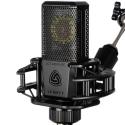
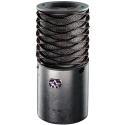
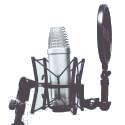
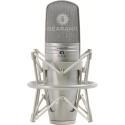
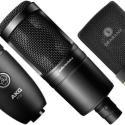
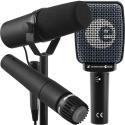
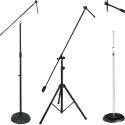
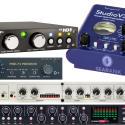
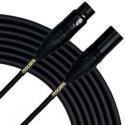
The following pop filters came off the recommended list when we published our August 2022 Edition:
Publication of our August 2021 Edition resulted in the following pop filter being removed from the recommended list above: Neewer NW(B-3).
Our August 2020 update resulted in the following pop filters coming off the recommended list above:
The following pop filters came off our recommended list above due to our recent update, but you can still read about them:
As a result of the recent update to this guide, there were 3 pop filters that were removed from the recommended list above, however you can still read about them here: